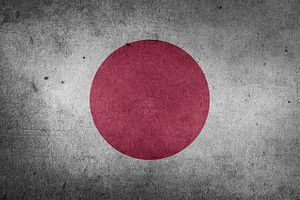It is a troubling sign of the times in Japan when the government fails to unequivocally condemn threats of violence that target freedom of expression while politicians grandstand on censoring art. Organizers of the 2019 Aichi Triennale, a sprawling showcase of contemporary art, got more publicity than they bargained for. In an exhibit entitled After ‘Freedom of Expression?’ organizers displayed some 20 transgressive works, including a comfort woman statue that incensed Japanese conservatives because it drew attention to the Japanese military’s system of sexual slavery in the 1932-45 period. The “Statue of a Girl of Peace” is a South Korean work depicting a young woman in traditional Korean attire sitting next to an empty seat. A similar statue is located across the street from the site of the Japanese Embassy in Seoul that Tokyo wants removed, along with others around the world that reproach Japan over its inadequate contrition and efforts to downplay this sordid saga.
Over the past several months, the rupture between these frenemies morphed from battles over the shared history of comfort women and forced labor into a trade row as Japan instigated tit-for-tat trade restrictions that precipitated Seoul’s decision to terminate an intelligence sharing pact. This trifecta of history, trade and security was triggered by Japan’s bumbling diplomacy and poorly thought out actions, an own goal that plays to the advantage of Beijing and Pyongyang. Certainly, President Moon Jae-in earned an assist on that goal by mishandling unresolved grievances from the colonial era and playing the anti-Japan card to rally public support. Meanwhile, the Japanese public, egged on by a jingoistic press, supports Prime Minister Abe Shinzo’s Trumpian tactics.
His reactionary supporters may not know much about art but they know what they hate.
Japan’s culture wars escalated in early August 2019 over the art exhibit, as some netizens took exception, sight unseen, to the Girl of Peace and a video installation depicting an image of Emperor Showa (Hirohito) being incinerated by a blowtorch. Following a faxed threat to set fire to the venue, 770 threatening emails and a cascade of scripted tirades by angry callers, organizers shutdown the exhibit just three days after it opened, mindful of the arson attack on Kyoto Anime the previous month that killed 35 employees. This decision without consulting any of the artists showing their works at the Triennale drew a sharp reaction in a petition signed by 72 of them condemning both the threats and the organizers’ capitulation. In a gesture of solidarity, two South Korean artists withdrew their work while other artists requested their art be removed from the festival until the controversial exhibit was reopened.
It was certainly an ironic decision given the symbolism of displaying art that had been rejected or removed from previous shows for political reasons. The After “Freedom of Expression” exhibit was intended to highlight and challenge such efforts to stifle this freedom. Adding to the drama, the governor of Aichi accused the mayor of Nagoya of championing censorship by advocating closure of this special exhibit, asserting that this violated Article 21 of the Constitution guaranteeing freedom of expression. As Philip Brasor wrote, “By demanding that a public function be shut down due to a threat of violence without expressly condemning that threat, the authorities, inadvertently or not, send a message that says violence could be an acceptable means of protest.” Chief Cabinet Secretary Yoshihide Suga only said that such threats are wrong “generally speaking” in a manner implying they were just possibly justified in this case.
Japan Forward, the conservative Sankei Shimbun’s English language media outlet, tried to shift blame onto the organizers, accusing them of engaging in hate speech, fuming, “Many of the works shown cannot be characterized as anything but expressions of hate towards the Japanese people and the Emperor,” adding, “It is difficult to imagine why on earth a behavior based on hate — like the exhibition in question — should fall within the scope of ‘freedom of expression.’”
Japan Forward asserted that the Japanese curator sought to inflame “public opinion as a marketing technique to breed confrontation” and called for common sense to prevail, assuming that its aesthetic tastes and constitutional interpretations represent that common sense. Apparently, those threatening violence against the art show share that common sense, one that is inimical to freedom of expression. Moreover, by condoning politicians weighing in against the exhibit, Japan Forward sanctions violating the culture and arts law guaranteeing noninterference by authorities in such situations.
It also turns out that those protesting the burning Emperor video were clueless about the artist’s history and intentions, whipping up hysteria on social media based on ignorance or willful distortion. Art critics assert that the artist is definitely not against the imperial system and that the video was actually a protest against the burning of 470 copies of a museum catalogue containing the Emperor’s image instigated by right-wingers and local assemblymen in Toyama Prefecture.
Perhaps unintentionally the curator succeeded in highlighting how limited freedom of expression is in Japan and how informed opinion has been overwhelmed by an ideologically charged public discourse.
The Aichi Triennale debacle is yet another example of how the rising tide of revisionist denial and downplaying of Japan’s wartime and colonial era abuses under Prime Minister Shinzo Abe has had a chilling impact on freedom of expression as academics and journalists are subjected to orchestrated attacks.
Such efforts to rewrite the worst chapter of Japan’s modern history shine a limelight on it and impart a whiff of what life must have been like under the militarists when censorship was widespread and dissent dangerous. Curbs on freedom of expression in contemporary Japan appear to be gaining momentum under a reactionary political leadership and represent a threat to democracy and the free press.
Jeff Kingston is Director of Asian Studies at Temple University Japan

































